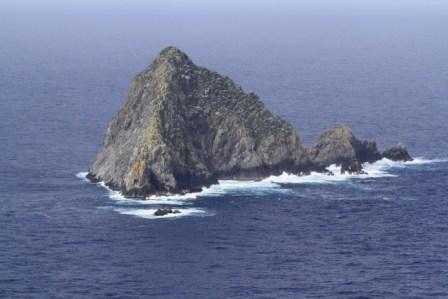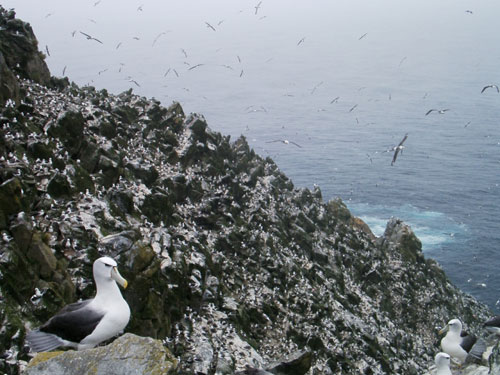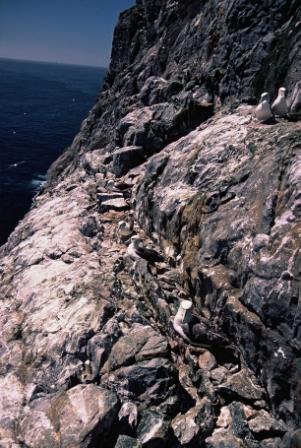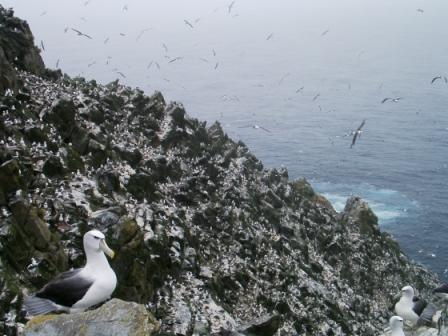
Mewstone is one of only three breeding sites of the ACAP-listed and Vulnerable Shy Albatross Thalassarche cauta, a species endemic to Australia. The other two sites are Albatross Island (click here) and Pedra Branca. Mewstone lies 22 kilometres off the south-eastern coast of Tasmania and falls within the Southwest National Park and the Tasmanian Wilderness World Heritage Area. The island has been designated an Important Bird Area for its large Shy Albatross and Fairy Prion Pachyptila turtur populations.

The only way to survey reliably its Shy Albatross population that nests largely on inaccessible cliffs is to take photographs from a helicopter. The most recent population assessment, conducted in 2006, was of c. 10 000 breeding pairs.

Some of the more accessible Shy Albatross nests on the Mewstone have been visited to deploy geolocation devices. Access is via boat and can only be achieved in favourable weather, requiring both agility and good timing to jump from the dinghy to the landing site (a crack in the rock) at the top of a swell. Only day visits are made to reduce disturbance and as there is very little in the way of flat ground for camping. Landing is prohibited without permit.

This pre-fledging Shy Albatross on Mewstone has been fitted with a back-mounted tracking device. The aerial is visible.
Click here to access the ACAP Species Account for the Shy Albatross.
Selected References:
Alderman, R.L. 2012. The Shy Albatross (Thalassarche cauta): Population Trends, Environmental and Anthropogenic Drivers, and the Future for Management and Conservation. PhD thesis, University of Tasmania. 180 pp.
Alderman, R., Gales, R., Hobday, A.J. & Candy, S. 2010. Post-fledging survival and dispersal of shy albatrosses from three breeding colonies in Tasmania. Marine Ecology Progress Series 405: 271-285.
Alderman, R., Gales, R., Tuck, G.N. & Lebreton, J.D. 2011. Global population status of shy albatross and an assessment of collony-specific trends and drivers. Wildlife Research 38: 672-686.
Baker, G.B., Double, M.C., Gales, R., Tuck, G.N., Abbott, C.L., Ryan, P.G., Petersen, S.L., Robertson C.R. & Alderman, R. 2007. A global assessment of the impact of fisheries-related mortality on shy and white-capped albatrosses: conservation implications. Biological Conservation 137: 319-333.
Brothers, N., Pemberton, D., Pryor, H. & Halley V. 2001. Tasmania’s Offshore Islands: Seabirds and other Natural Features. Hobart: Tasmanian Museum and Art Gallery. 641 pp.
Rachael Alderman, Biodiversity Conservation Branch, Department of Primary Industries, Parks, Water & Environment & John Cooper, ACAP Information Officer, 12 May 2013

 English
English  Français
Français  Español
Español